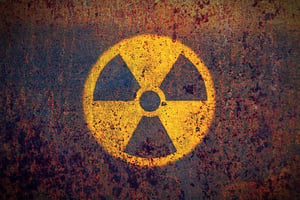Thanks to an innovative technique developed by physicists at the University of Maryland, USA, it will be easier to detect radioactivity in wide and “crowded” areas, such as, for example, in the containers of a ship, in suitcases loaded onto an airplane or in other “suspicious” environments. The new experimental equipment – write the researchers in the journal Science Advances – make it possible to “intercept” radioactive material even at distances that renders it invisible to traditional measuring systems, like the Geiger counter. If these studies are confirmed and the new equipment is further enhanced, it will become possible to detect a source of radiation closed inside a box, or in a container, at a distance similar to that of a soccer field. This means, for example, that areas like ports of entry or access to airports can be kept under control, or that entire freight trains full of goods potentially at risk can be checked.
The tool designed by the Maryland researchers uses a particular type of infrared laser, called laser-induced electron avalanche breakdown. How does it work? In layman’s terms, radioactive materials emit electrons (in addition to other particles), which attach to oxygen in the air and form a kind of electronic cloud. The laser detaches these electrons from their oxygen molecules, setting off a process known as an electronic avalanche that is relatively easy to detect, because it modifies the infrared light of the laser. These alterations signal the presence of a radioactive source and enable it to be quantified, based on the type and size of the changes. “Traditional detection methods rely on a radioactive decay particle interacting directly with a detector”, said Robert Schwarz, main author of the study, “All of these methods decline in sensitivity with distance”.
“Electron avalanches were among the first demonstrations after the laser was invented”, adds Howard Milchberg, professor of physics at the University of Maryland, “This is not a new phenomenon, but we are the first to use an infrared laser to seed an avalanche breakdown for radiation detection. The laser’s infrared wavelength is important, because it can easily and specifically detach electrons from oxygen ions”.

